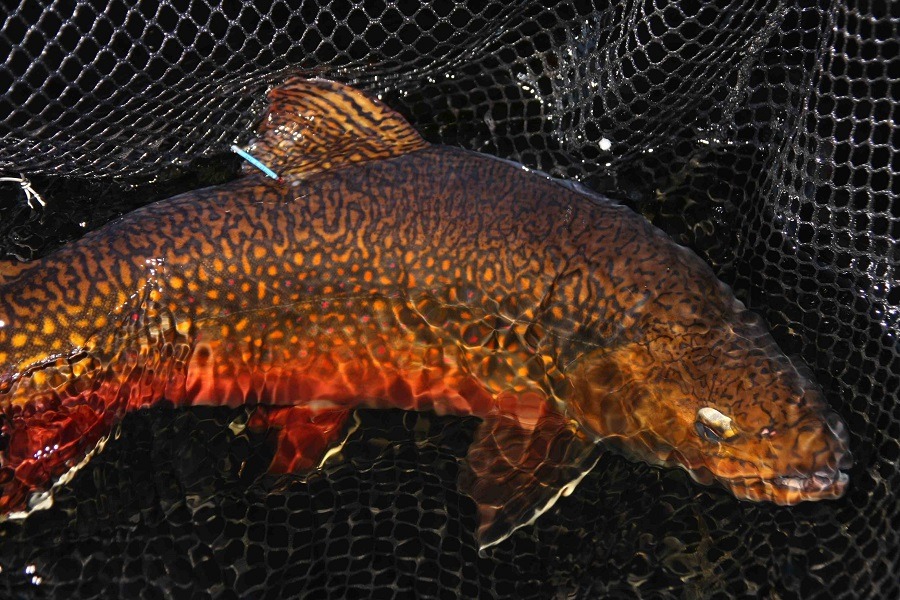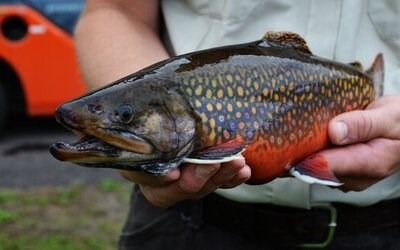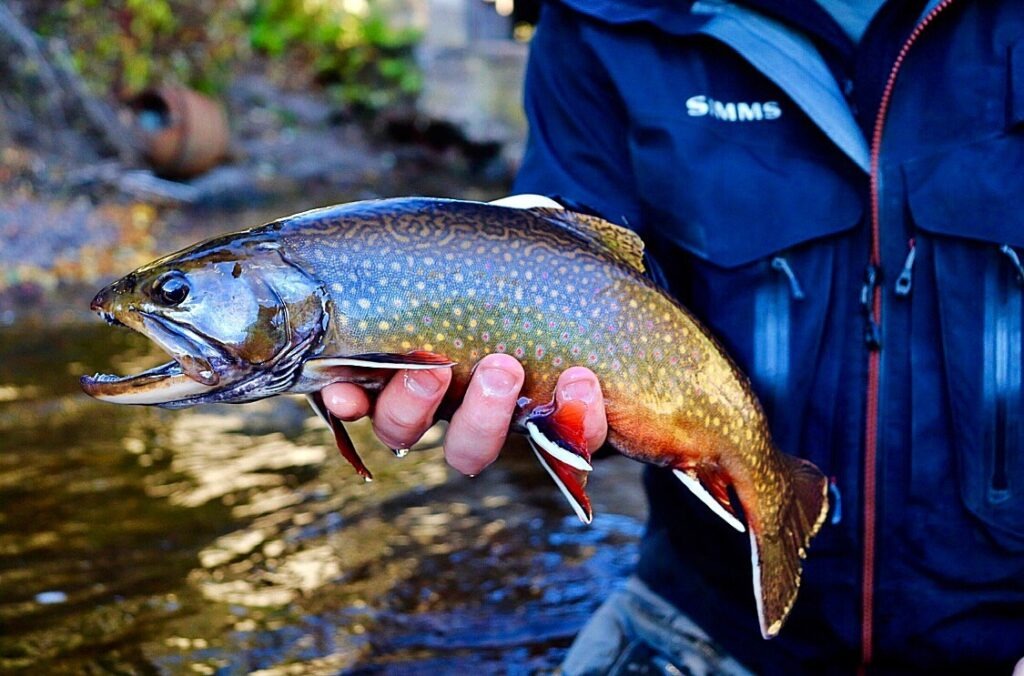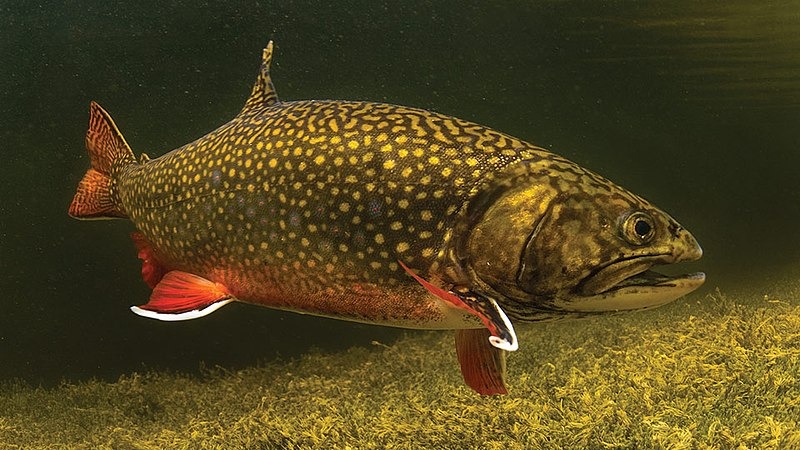The Brook Trout, known scientifically as Salvelinus fontinalis, is a visually striking and ecologically important fish found in cold, clear freshwater habitats. This guide explores its basic characteristics, behavior, and tips on how to identify this unique species.
Basic Info
- Common Name: Brook trout
- Scientific Name: Salvelinus fontinalis
- Group Name: Salmonidae
- Average Life Span In The Wild: 3-5 years
- Size: Typically 10-12 inches, but can grow up to 18 inches.
- Weight: Usually weighs around 1-2 pounds.
Behavior
Brook trout are cold-water fish that prefer clear, fast-flowing streams and rivers with rocky bottoms. They are territorial and aggressive, especially during spawning season. They are carnivores and feed on insects, small fish, and crustaceans.
How to Identify
- Appearance: Brook trout have a slender body with a dark blue or olive-green back, a light-colored belly, and reddish-orange spots along their sides. They have a small mouth with sharp teeth. Their fins are also reddish-orange, especially the dorsal fin.
- Habitat: They are native to North America and can be found in cold, clear streams and rivers with rocky bottoms.
- Behavior: As mentioned earlier, they are territorial and aggressive, especially during spawning season. They are also known for their acrobatic jumps when hooked.
Brook trout are beautiful and fascinating fish that are a popular target for anglers. If you’re lucky enough to catch one, be sure to admire its vibrant colors and unique markings.
Some pictures of Brook Trout
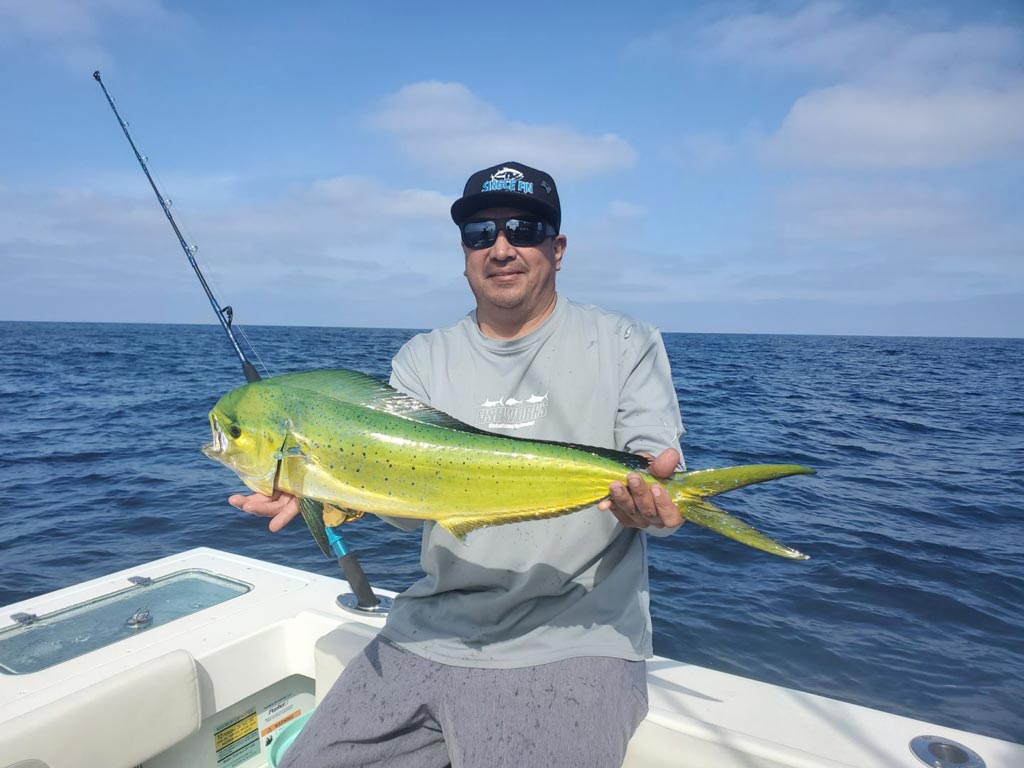
Robert Smith is the proud owner of Bait Barrels and Bows, a premier fishing sports store established in 1989. With over three decades of experience in the industry, Robert has honed his skills to become an expert angler, sharing his vast knowledge and passion for fishing with enthusiasts around the world. Through his store and writings, Robert provides invaluable tips and guidance, helping both novice and seasoned anglers improve their techniques and enjoy the sport to its fullest. His commitment to the fishing community is evident in his dedication to quality products and excellent customer service.


